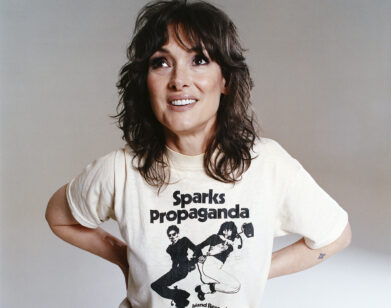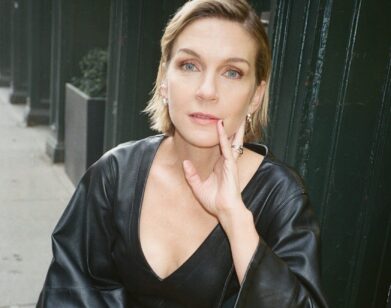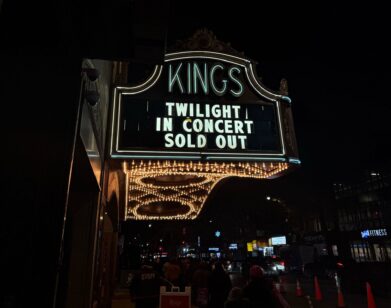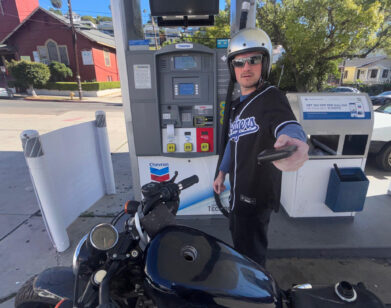Light Science: Rodrigo Prieto
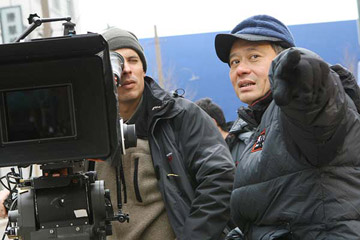
Rodrigo Prieto, cinematographer for such films as Amores Perros, Frida, 21 Grams, Brokeback Mountain, and Lust, Caution, is known for his moody lighting. Upon the release of his latest film (April 17), State of Play, starring Russell Crowe, Interview sought to test all of his temperaments.
SHARON ABELLA: How do you decide what you want a movie to look like?
RODRIGO PRIETO: I try not to think of the way it could be photographed. I prefer reading to feel how I connect with the story and the characters, and what emotions I experience as the story progresses.
SA: When do you start thinking more as a cinematographer?
RP: On the second read, specific visual ideas start popping into my mind. I do research, which entails looking at photography and art books for examples of framing, texture, color, and lighting that could be relevant to specific scenes in the storyline.
SA: How does collaboration factor into the process?
RP: I present images to the director, and get feedback. The director and production designer bring their own references to the table, and the composite becomes the basis for the visual language for the film. I then test different film stocks, lenses, cameras, lighting set-ups, colors, and anything that I can think of that can enhance the storytelling through the images we produce. This is a phase of filmmaking that I enjoy.
SA. You have worked closely with Alejandro Inarritu (Amores Perros, 21 Grams, etc.). He is such a consummate and visual director. How do your visions coincide? (LEFT: WITH ANG LEE ON THE SET OF BROKEBACK MOUNTAIN)
RP: Alejandro is a very complete director. He truly understands the medium and knows how to use the elements at his disposal to narrate his films: the performances, the sound, the music, the editing, the production design, and of course, the cinematography. We started working together some years before Amores Perros on TV commercials. We have a creative partnership where we sit down and share our ideas on how to shoot any given scene. We shotlist as much of the film as we can in pre-production and then adapt to the situation on the set. The camerawork on his films is very intuitive, and that is why I do the operating, so I can react to the performances and the rhythm of the scene as we go. He allows me complete freedom to use my instincts with the camera, adjusting for new takes whenever necessary.
SA: I was in particularly impressed with your work on Ang Lee’s Lust, Caution. Was there a language barrier problem?
RP: I felt honored that Ang would asked me to photograph, since it meant having to deal with a cinematographer who didn’t speaking the language that everyone else on set is using. This was a big challenge, but in the end, visual language is universal. Ang made an effort to keep me informed on everything that was going on. I also had a personal interpreter, and most of my crew, who were from Hong Kong, spoke English.
SA: Had you worked with him before?
RP: On Brokeback Mountain, but this was a very different experience. Ang seemed much more intense on Lust, Caution than on Brokeback. I understand that Brokeback was a film that he wanted to do to wind down and recuperate from the nightmare he went through in The Hulk. So he made relatively few takes, and the hours were reasonable each day. In China, in contrast, we typically worked at least 14 hours each day, six days a week, and on the seventh day we would see rushes, and sometimes scout.
SA: Maybe it was the labor laws!
RP: Needless to say, it was exhausting, but exhilarating at the same time. Ang is very particular about camera placement and lens choice, so he is very hands-on in this respect. My input is more lighting, film stocks, and filtration. I do operate the camera as well, but he will ask me to do very specific things, so it is a very different approach from working with Alejandro.
SA: What’s the first film you worked on?
RP: I started out when I was ten years old by making Super 8 science fiction and monster films with my older brother, Antonio. We would make stop-motion films of clay monsters inspired on Ray Harrhausen’s work on films like Jason and The Argonauts and Clash of the Titans.
SA: And that turned into a career…
RP: That evolved into eventually attending film school in Mexico City. I worked for a fashion still photographer, Nadine Markova, for a year, which sparked my interest in photography, and led me to choose cinematography as my field.
SA: Do you admire the classic Hollywood cinematography of someone like George Hurrell?
RP: His portrait work is unparalleled and his lighting is exquisite. I particularly like his portrait of Anna May Wong. I simply can’t understand how he could make hard light look so good on an actor’s face. On Broken Embraces, which I recently completed with Pedro Almodóvar, I had a chance to explore lighting Penélope Crúz in a different styles, ranging from naturalism, to more glamorous “Hollywood” style, but I know that I could not come even close to the perfection of Hurrell’s lighting.
SA: What is your advice for aspiring cinematographers?
RP: Shoot anything that comes your way. Do it all with the same enthusiasm as if you were making Gone With the Wind. Someone will notice.


